There’s a million indifferent people in the room, and your job is to sell them your product. You’re shouting until you’re red in the face and your voice is hoarse, listing all the wondrous features of your product. It’s got this... but people talk over you; check this out... but they switch off, unengaged and staring into space; ah, but this is the best part of all… alas, people start to walk out.
Embarrassing, but your own fault. You’re doing it all wrong. How about you get all those people into smaller rooms based on their preferences, so you can tell them what they want to hear?
How about you segment your audience?
What is audience segmentation?
Audience Segmentation is a marketing strategy. Simply put, it involves separating and grouping a business’s marketing audience into subgroups based on characteristics and attributes that they share. By identifying subgroups within an audience, marketers can tailor and personalise their messages for the best chance of engagement, conversion, and a stronger audience-brand relationship being formed.
You might be thinking… that sounds too much like hard work. It takes a little something, definitely. It takes more than just writing out an email, hitting the select all contacts button, firing it out, and crossing your fingers. But it works. With all the data we have at our disposal and different software that helps us segment data automatically; we can give the people what they want.
76% of consumers expect a business to be aware of their preferences.
[Salesforce]
There are no set guidelines for how or who your business should segment. Most businesses separate their audiences based on demographics, such as location, gender identity, age, ethnicity, and income. A recent trend is to segment audiences based on their behaviour, attitudes, and beliefs to paint a better picture of different audience segment personalities. We’ll take a closer look at the different types of segmentation later in the article.
As segmentation varies from business to business, one thing remains constant. It’s important.
Why is audience segmentation important?
When you try to please everybody, you end up pleasing nobody at all. Content that tries to hit as many information points as possible scatters its message, dilutes it, and ends up being flat, boring, and unspecific. Customer Segmentation helps marketers to engage, relate, and resonate with their audience. It increases open rates and click-through-rates (CTR).
Segmented campaigns result in 23% higher open rates, with 49% higher CTR.
[Mailchimp]
It’s difficult to assign a particular dollar value on audience segmentation; it’s just one part of your overall marketing campaign. Still when it’s done correctly, segmentation means you pay less for each impression a campaign makes. Furthermore, it helps the wider business understand who their target audience is, so they know better where to go with product development and which sales outreach channels to target.
Let’s not forget who this is all about: the audience. They get what they need, and when they need it.
Where to start with audience segmentation?
Without a doubt, the first thing you need is to have the technology in place to help you do it. Specifically, you need a tool with which you can store all your customer data in line with the law; a tool with which you can scrape all the data you need on a client; and a tool with which you can actually segment your audience with. Sounds… familiar.
NetHunt CRM
NetHunt Customer Relationship Manager (CRM) is a CRM for sales; it lives inside your existing Gmail inbox, meaning you don’t have to keep flipping willy-nilly between different tabs all day. On top of the core features you would expect from a CRM, such as contact management, full customer context history, and bulk emails features, NetHunt is a powerful segmentation tool.
Importing all your existing data from Sheets or another CRM is easy. Afterwards, you can use our native and Zapier integrations to enrich your client profiles with juicy data. Then, it’s finally time to segment your audience using Filters.
How to segment a database with NetHunt CRM
Let’s imagine we’re sending an email to everybody in our database that’s a CEO of a business that’s our partner. We need to segment our database accordingly. Each contact record, if filled out correctly, should contain a field with their job position, and their customer status.
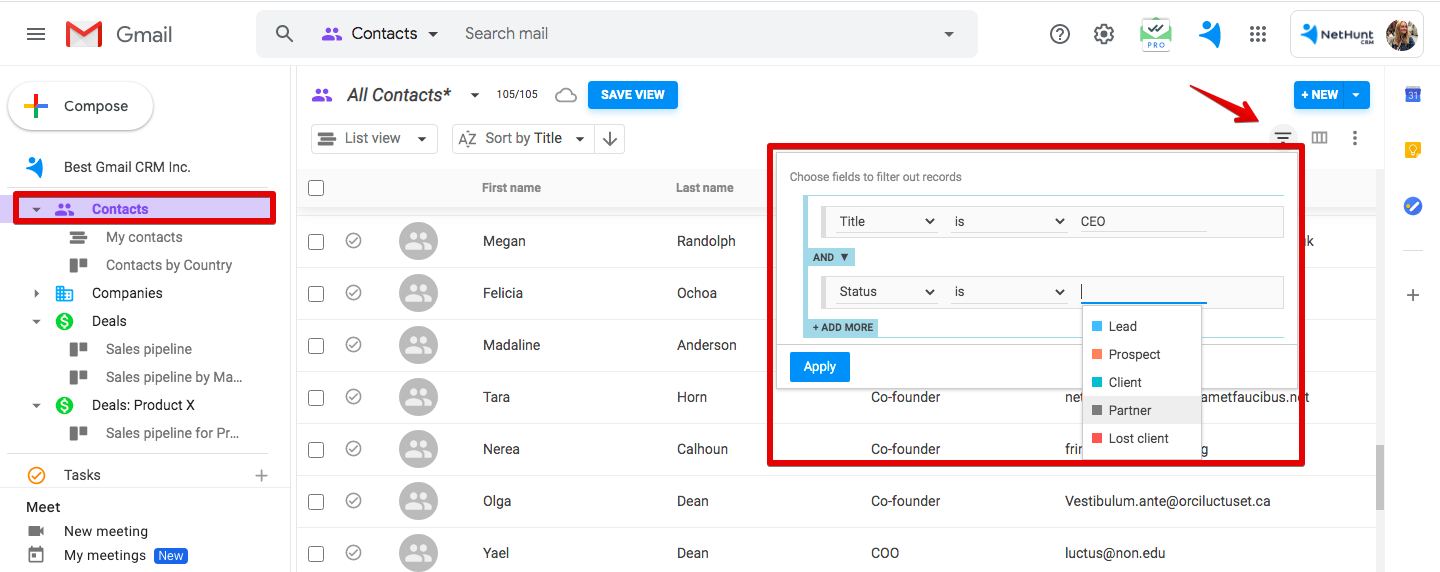
I simply head to the Contacts and create a view. I filter by status, partner; I filter by position, CEO.
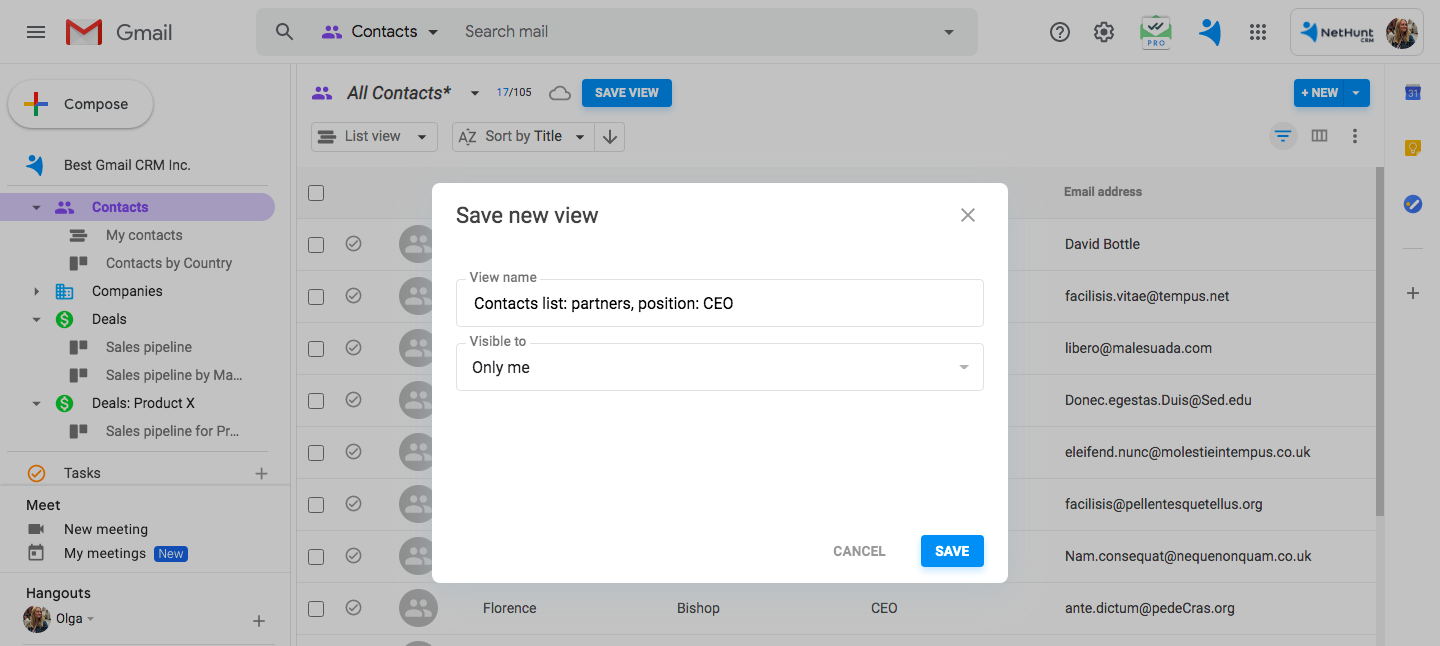
Done. I can save this view and target them with personalised bulk email campaigns whenever I need to. The segment automatically updates whenever a new contact is added to the database. Easy!
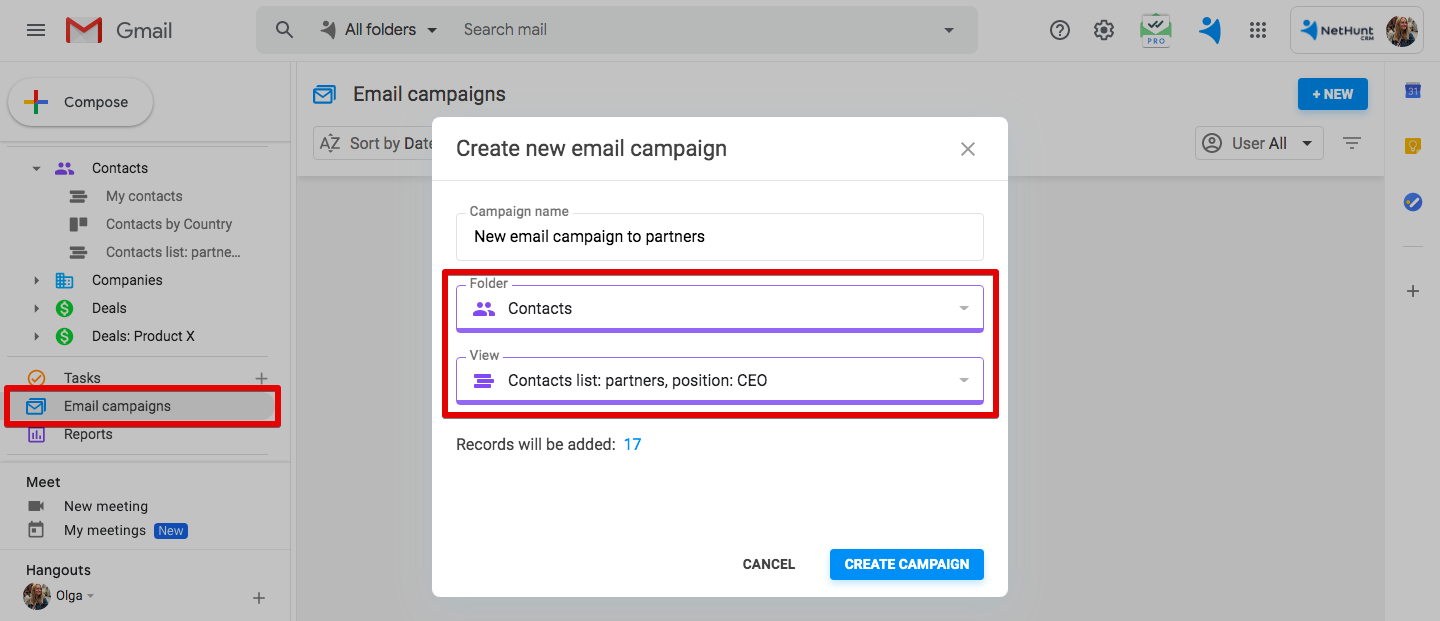

Okay, I was obviously very unoriginal with my choice of segmentation, but you can use literally any set of parameters for filtering out the contacts that you need.
Audience segmentation models
With the right tools in place, segmentation is easy; pretty much automatic. By carrying out research into different data points of your audience, you can start to segment them by following one, some, or all of the following segmentation models, applied to relevant NetHunt CRM audience segmentation examples.
1. By demographics
Demographics, by definition, involves characteristics such as age, gender identities, job roles, income, and location. It is the most basic type of segmentation, and it works. It helps marketers target the exact buyers that they know need their products, based on the buyer personas that were drawn up when they were first developing their marketing channels.
Example. At NetHunt, we can segment our customers based on their job position and responsibilities in order to target marketing content at them. We can look for all the marketers amongst our leads and fire out drip campaigns and email messages, waxing lyrical about NetHunt’s templated mail merge email campaigns with unlimited sends per 24 hours.
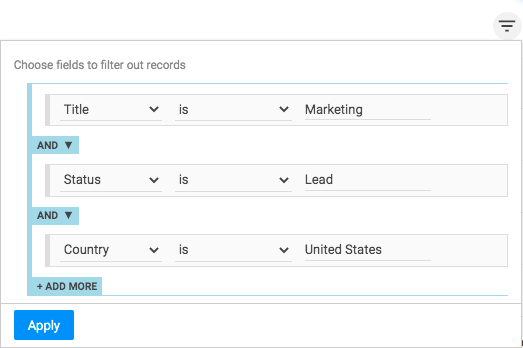
2. By engagements
One type of psychographic segmentation looks at how prospects, leads, and customers engage with a brand. It considers variables such as whether they are active on social media, whether they open emails and click through; including what kind of email they open and click through, and which devices they are doing it on.
Example. At NetHunt, we could use engagement segmentation to split up our customer list based on whether they are using an Android or Apple device. From that, we could send targeted emails to each separate user including links to our app in the respective app stores.
3. By psychographics
Psychographic segmentation requires analysing an audience’s different behaviours before splitting them up based on the results. It dives even deep into an audience’s mindset, using qualitative research such as surveys and interviews to discover more data points about each participant such as hobbies, lifestyle choices… even which TV programmes they watch. With these data points, we can segment even more specifically and better understand each segment of audience.
Example. The ongoing Coronavirus pandemic has resulted in less predictable buyer behaviour. By using email tracking functions to see which kinds of content different audiences are engaging with the most, NetHunt can continue to educate and inform their audience about which features specifically tickle their fancy.
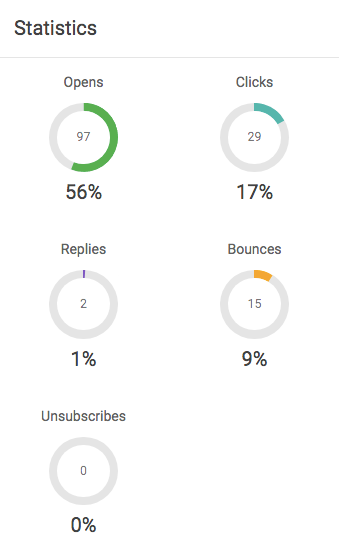
4. By buyer journey
Prospects at the beginning of your pipeline are just discovering their problem, and so they need specific content based on that; leads at the other end of your pipeline already know their issue and understand what to buy. Without a doubt, the two segments of customers will have different questions that need answering.
Example. NetHunt might target email campaigns at prospects in the Interest stage of our pipeline, presenting our Gmail CRM system as the antidote to Google Sheet CRM blues. Separately, we might offer those in the proposal stage a small offer or discount on their first month subscription in order to push them over the line to conversion.
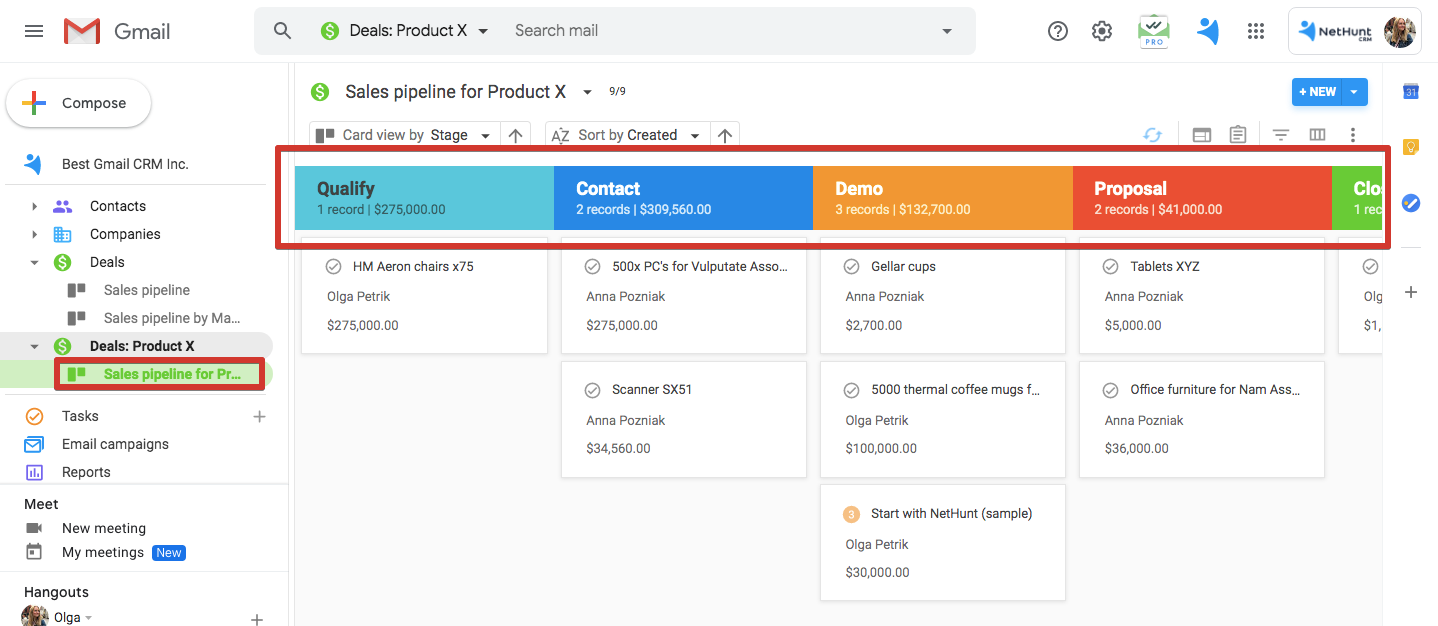
By using data points in combination with each other, you can even further personalise your messages. Still, it’s important not to over-segment, because this means more work for your marketing team and less results for your sales team. It’s best to follow the best practices that have been learnt by the intrepid marketers who have gone before us.
Audience segmentation: Best practice
Audience segmentation is one of the oldest tricks in the book, but has become much more prominent recently with the advancements of different technologies. Here are five proven best practices to follow before, during, and after your segmented outreach campaign.
Before. Do your homework.
Having a stab in the dark about different attributes a segment might possess is pointless and counter-productive. Instead you need to have reliable, in-depth research of observed behaviour to back up your segmentation choices. This goes beyond the data that you might be able to find one one audience member’s social media profile, and involves implementing an Conversational Experience Strategy to know, understand, and learn from each member of your wider audience.
Nothing beats a good questionnaire, especially an online one. You can tailor each question to determine the exact customer segments you want to fill. Stick it in your Facebook community group and offer a small reward for completing it. Bingo; data at your disposal.
During. Don't overdo it.
Whilst it’s important to expand your knowledge and constantly strive to improve segmentation processes, it’s also important to know that you can have too much of a good thing. Narrowing an audience too much means there are too few people to target. That increases your workload and decreases the chances of successful engagement. That’s not why we’re doing this, is it?
During. Avoid bias.
It can be easy to focus on segmenting the customers who are most engaged with your product and brand, because they are the easiest ones to collect data from. However, this leads to a chronic underdevelopment of marketing segments, and means your brand won’t hit as many eyes as it needs to. Explore niches; take note of any new kind of customer that buys a product and get to the root of the problem they want to solve.
During. Find out why.
Don’t confuse behavioural clusters with actual audience segments. A behavioural cluster is a group of people exhibiting a one-time, temporary type of behaviour. People often more cluster, but they don’t move segment ofter. To understand the difference between a segment and a cluster, it’s important to drill down to the root cause of why your audience acts in a certain way.
After. Measure your success.
Don’t segment at random. Random is bad; random doesn’t work. Segmentation is a process from building your buyer persona, to outlining the buyer journey and developing specific content that speaks to each individual segment. Set SMART goals for what you want to achieve, and make sure that each of those goals adds up to paint the bigger picture.
Track the right metrics to hit those goals. Marketers tend to get bogged down in open rates and CTR, when in fact they should be more focussed on specific metrics such as market share, preference share, wallet share, and Customer Lifetime Value (LTV).

You can’t walk up a mountain in one single step. You can’t eat a burger in one single mouthful. Bitesize chunks and baby steps are the only way you can reach your goal. Audience segmentation makes your audience database much more manageable, your outreach more personalised, and your product more relatable.











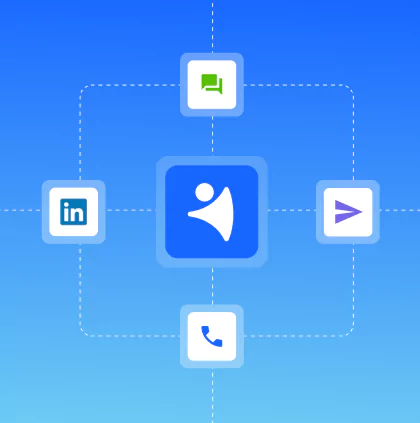








 product experts — let's find the best setup for your team
product experts — let's find the best setup for your team